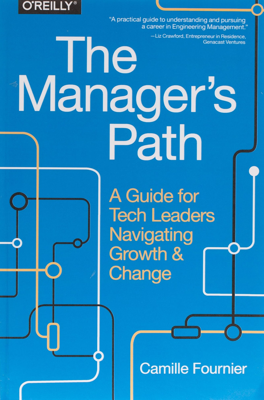Bootstrapping Culture
Setting and Assessing Team Culture
Establishing and nurturing a positive team culture is a fundamental role for senior engineering leaders. Neglecting this aspect can complicate leadership roles as the team expands. Key to setting culture is transitioning from unstructured environments, common in startups, to one where structure supports learning from successes and failures. This process fosters stability and scalability in growing teams.
Organizational Structures and Dynamics
Structures within startups often evolve from task-oriented, homogeneous, small teams where decision-making can thrive in an informal setting. However, as companies scale, introducing structure becomes crucial to manage growing complexity and prevent confusion and inefficiency. Leaders need to be decisive yet adaptable to evolving circumstances without getting stuck in rigid hierarchies or processes.
Role of Structurelessness and System Evolution
The idea of a "structureless" group can sometimes mask underlying hidden hierarchies. Effective startups need a moderate level of structure to scale complexities thoughtfully. Such structures allow teams to adapt to changing business needs and growing technical requirements.
Handling Early Team Decisions
Initial team decisions cover a wide spectrum, from technical frameworks to office norms. These decisions, although subject to change, set preliminary paths that can either constrain or enable future flexibilities in company culture and operational methods.
Cultural Impact on Technology and Processes
Cultural orientations greatly affect technological and process-oriented decisions. For instance, the programming cultures in startups often influence how technology stacks and methodologies evolve, highlighting the importance of aligning cultural dynamics with operational goals.
Balancing Risk and Structure
As companies grow, the balance between maintaining agility and introducing necessary structures becomes more important. The right amount of structure varies depending on factors like company size, maturity, and the existing level of formal infrastructure. Leaders must thoughtfully apply structures that correlate with the company's stage of development and risk profiles.
Creating and Applying Core Values
Core values are central to defining a team's culture and require careful cultivation. These values guide recruitment, team dynamics, and operational decisions, shaping a coherent corporate identity. They also play a critical role in managing diversity within teams, emphasizing inclusivity based on shared professional values rather than superficial similarities.
Practical Application of Core Values
To effectively integrate core values: - Define and continuously reinforce these values through recognition and rewards during team interactions and evaluations. - Use core values as frameworks during recruitment to ensure alignment and cultural fit, which transcends basic social compatibility. - Address any misalignments within the team that could disrupt cohesion and performance.
The Role of Cross-Functional Teams
Cross-functional teams enhance collaboration across different business functions, leading to more cohesive product developments. Such structures not only foster better internal communication but also align product development closely with organizational goals, acknowledging the interdependencies of diverse business functions.
Developing and Evaluating Engineering Processes
Proper engineering processes are crucial as they provide the structural backbone for operational activities. These processes need to be: - Well defined to manage risks and facilitate efficient workflows. - Continuously assessed and adjusted to fit the team’s growing complexity and evolving needs. - Supportive of constructive postmortem reviews or learning reviews, focusing on systemic improvements rather than blame.
Integration of Culture and Organizational Processes
Leaders must ensure that the company's cultural underpinnings and core values intertwine seamlessly with formal processes and structural decisions. This integration helps in molding a resilient organizational framework that supports sustainable growth and adapts to dynamic business environments.
